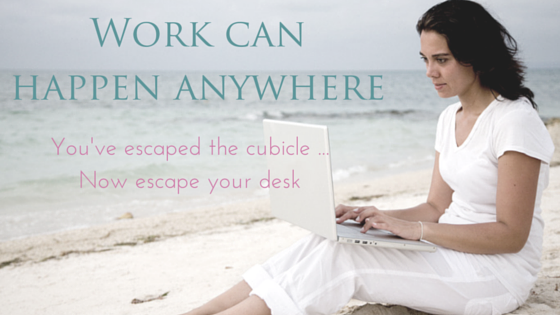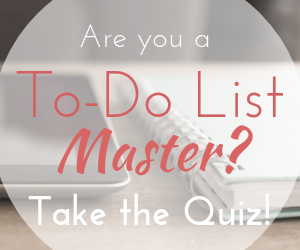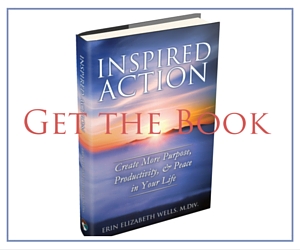I think I confuse my husband often. As a life-long entrepreneur (not including a few week stints as a temp in grad school), I’ve learned to shift my workspace to fit my mood.
Which means that during the course of any given day I might write a blog post from bed, work on a new email campaign at my desk, read Charles Duhigg’s new book Smarter, Faster, Better over lunch at the kitchen table (it’s great BTW), and curl up to do some research or planning on the couch with Downton Abbey playing in the background. (Yep, MAJOR Downtown Abbey fan here, it’s one of my favorite “keep me company” shows while working.)
There are also the days when I’ll hop in the car and drive up the coast to sit by the ocean for a few hours and think, plan, or write, or I’ll curl up in a coffee shop to plan a new project.
To someone who’s spent most of their life at a specific desk in the corporate box, this flexibility of environment can seem confusing, awkward, or horribly bohemian. EEK! LOL.
Why am I sharing these details of my daily rhythm? Because if you’ve been stuck in the corporate box at any point in your life, then I want to help you shake loose from the thinking that work only happens at a desk or in the office. (And I’m not talking about responding to email from your phone on the sidelines of your kid’s soccer match – hopefully a limited and occasional necessity rather than a weekly habit.)
When you embrace the entrepreneurial lifestyle (or even just a remote working corporate professional), sometimes shaking the mind loose from the structures it’s been boxed into is the greatest challenge and gift. That’s why I wanted to share a bit about how I make this flexible work environment functional and productive.
The Three Questions
Really, there are three questions that I ask myself (almost unconsciously now after over a decade) to choose the right workspace for the moment…
1. What am I working on?
My process starts with the intentional decision about what task will be getting my focus for the next period of work. Being specific and decisive about this helps to make sure I’m choosing the right space and bringing with me anything I might need to get the task done.
2. What tools or resources do I need to complete it?
Once I know the task, then I can clarify what tools or resources might be necessary to get the task done.
For instance, video editing is best done on my big desktop rather than my little Macbook Air. Planning some projects out on my white board wall helps me write, draw, and play with colors, while occasionally stepping back to see the whole process.
Other tasks just need a laptop and internet connection, and therefore could be done from virtually anywhere both in my home and beyond.
3. Where could that feel best?
The last question looks beyond just the tangible tools needed to get the job done. I consider my kinesiology in relationship to what I’m working on. Kinesiology is really just a fancy word for how my body is moving or being held when I’m getting the task done.
Let me give you a few examples of what I mean…
When I’m meeting with clients on Skype I typically sit at my desk because while my desk chair is comfortable it does hold me upright and allows me to stay present and focus on connecting with the client and our conversation.
When I’m doing creative writing I often work in bed, curled up with my laptop and propped on pillows. There’s something about that nestled energy that allows my creative work to flow more easily.
When I’m planning projects or doing more reflective work, then I like to go places where I can get a long view (preferably of something beautiful.) That’s why I’ll often go out to a cafe or hang out by the beach when it’s time for reflective work. The physical experience of looking out into the distance helps me think more expansively and broadens my imagination of what’s possible.
Workspace Flexibility for You
What might this look like in your life? What if you started by imagining all the possible places in your home and beyond where you could choose to “get things done.” If this is a completely new experience for you, then here’s a list of some of the places that I’ve tried or use to help you get started:
At Home:
- Desk (obviously)
- Couch
- Bed
- Comfy Chair
- Kitchen Table
- Whiteboard wall (Been fun exploring this one since installing it… might write more about it in future.)
- Dining Room Table (which is technically part of my office too)
Outside the Home:
- Beach/Ocean (the major reason I live where I do)
- Park with a blanket
- Library
- Café
- Car parked at an overlook (do this often if I want to go to the ocean when it’s cold or raining)
- Co-working space (get a day pass or a membership)
- Walking (for thinking, listening to audiobooks, or dictating ideas)
If you really want to shake yourself out of a rut, then turn your list into a checklist and push yourself to try all of them at least once. You might discover a new solution or location that you never would have considered before.
Before you say, “Well, that didn’t work.”
If you try something, and it doesn’t immediately feel like it works, don’t just dismiss it. Get curious…
- What specifically about this location or situation isn’t working for me?
- If I was working on a different task might it work better?
- Is there something else I would need to bring with me to make this more functional? (A set of headphones is a must-have for cafe-working in my experience, for example.)
How could you improve the situation and make it more functional for you?
- Maybe you need a pillow for your back when working in a certain chair or in the car.
- Maybe a set of headphones and your favorite focus-music playlist would make that cafe a better option.
- Maybe trying to pound through data and research while at the park wasn’t a good fit because your paperwork kept getting stolen by the wind.
Sometime a minor shift in your preparations or decisions could make a location more viable.
Bottom-line: Mix it up! Give yourself permission to not just stay “at your desk” simply because that’s what you used to do, or that’s what they taught you in your old job or in school. Choose your environment to support your effectiveness and keep it fresh!



